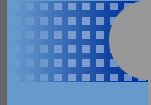Understanding
the benefits of different types of installation
Stretch-in Installation
There are situations in which the specifier
will wish to utilize the stretch-in method. Its selection may be for one of the following reasons:
- Provides enhanced underfoot
comfort, acoustical properties (i.e., higher noise reduction coefficients and higher impact noise ratings) when installed
with a separate cushion
- Increases thermal insulation
(R-value)
- Can be used over floors that
are unsuitable for glue-down
- Corrective measures, such
as seam repair, may be easier to perform
- Removal costs usually are
less than the removal of an adhered installation
Stretch-in installations should be avoided in the following
cases:
- On ramps and inclines
- Where office systems furniture
and demountable partitions are utilized
- Where heavy rolling traffic
is likely
- Where there is excessive humidity
- When carpet has a unitary
backing or other backing systems designed only for glue-down installation
Direct glue-down installation
- Suitable for rolling traffic
and ramp areas
- Seams are more durable since
there is no vertical flexing
- Minimized buckling in buildings
that have HVAC systems turned off for extended periods of time
- No restretch situations
- Facilitates access to electrical
and telephone lines under floor
- Practically eliminates incidences
of seam peaking
- No restrictions to area size
- Intricate borders and inlays
are possible
- Usually less expensive
Double glue-down installation
This method combines the stability of direct
glue-down carpet with the cushioning benefits of a separate cushion, stretch-in installation, as outlined below:
- Improves carpet appearance
retention, under foot comfort and overall performance
- Simplifies carpet bordering
and inlaying
- Suitable for wheeled traffic
areas
- No restrictions on size of area

